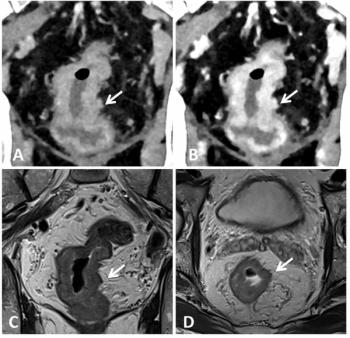
PET Images Show Brain Changes in Alzheimer’s Disease
Images obtained by PET have shown changes in brain connections in patients with Alzheimer’s disease.
CHICAGO - Images obtained by PET have shown changes in brain connections in patients with Alzheimer's disease, according to a new study presented today at the annual meeting of the Radiological Society of North America (RSNA).
Researchers from Duke University Medical Center in Durham, NC performed a multi-center biomarker study to analyze the structural connectome topological metrics and their reproducibility in Alzheimer’s disease pathology.
"The structural connectome provides us with a way to characterize and measure these connections and how they change through disease or age," co-author Jeffrey W. Prescott, MD, PhD, radiology resident, Duke University Medical, said in a release.
The researchers analyzed results of diffusion tensor imaging (DTI) and florbetapir PETs from 102 patients who were enrolled in a national study, the Alzheimer's Disease Neuroimaging Initiative (ADNI) 2. Standardized update value ratios (SUVr) were calculated from the PET scans for the frontal, cingulate, parietal, temporal, and occipatal lobes.
The findings showed a strong association between florbetapir uptake and decreases in strength of the structural connectome in each of these five areas. “Increased cortical florbetapir SUVr was associated with decreases in strength, and clustering coefficient, but not betweenness centrality,” the researchers wrote. “The best reproducibility between consecutive measurements for normal controls was 6% for strength, 16% for local efficiency, 13% for clustering coefficient, and 48% for betweenness centrality.”
"This study ties together two of the major changes in the Alzheimer's brain--structural tissue changes and pathological amyloid plaque deposition--and suggests a promising role for DTI as a possible diagnostic adjunct," Prescott explained in the release.
Increased amyloid burden may be seen even in the preclinical stages of Alzheimer’s disease, concluded the researchers. These findings may offer a role in assessing brain damage in early Alzheimer's disease and monitoring the effect of new therapies.
"Traditionally, Alzheimer's disease is believed to exert its effects on thinking via damage to the brain's gray matter, where most of the nerve cells are concentrated," senior author Jeffrey R. Petrella, MD, professor of radiology, Duke, added in the release. "This study suggests that amyloid deposition in the gray matter affects the associated white matter connections, which are essential for conducting messages across the billions of nerve cells in the brain, allowing for all aspects of mental function."
More research is needed into how the disease evolves in individuals, as well as the relationship between function and structure, and how they are affected by the increasing amyloid burden.
Newsletter
Stay at the forefront of radiology with the Diagnostic Imaging newsletter, delivering the latest news, clinical insights, and imaging advancements for today’s radiologists.



























